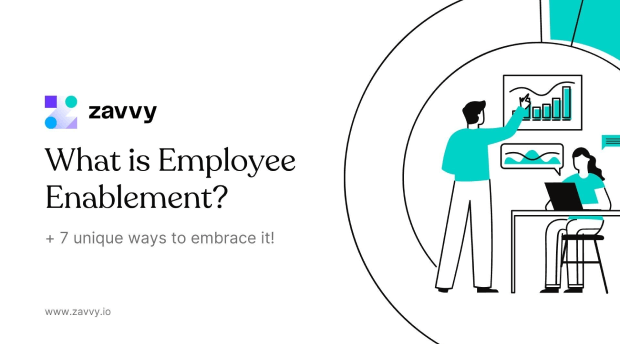
Alexander Heinle
Alex is a marketer at Zavvy. On this blog, he mainly shares insights gained from discussions with selected experts and from helping our customers set up and improve their onboarding or learning programs.


“The secret to great customer experience is a great employee experience." - Paul Marriott, President of Customer Success, SAP Asia Pacific Japan
We couldn’t agree more. Employee Experience or EX has become of great strategic importance as employees are finally being recognized as fundamental to building an agile and successful company.
But great EX cannot be designed merely through engaging employees. Employee engagement strategies focus on motivating people to put their best efforts in at work.
While that’s still important and will continue to be, motivation is a finite resource. In fact, employees can still be engaged in their work but fail to live up to their potential.
The solution? Invest in employee enablement.
We must define these terms before moving ahead because most organizations have a different understanding of what these terms mean, and it impacts how EX is designed.
Together with our curators, we have created a library of actionable digital marketing resources. Personalized to your team's needs.
Employee enablement is best defined as a strategic practice to provide employees with everything they need to do their job to the best of their abilities and creating an environment that allows them to perform optimally.
Wait a minute. Aren’t we doing that already?
Here’s the thing: We set expectations based on the resources that employees already have instead of meeting them where they are to provide them with the tools and resources they need to ramp up productivity.
According to SHRM, “the term employee engagement relates to the level of an employee's commitment and connection to an organization.”
Employee enablement is the next-gen evolution of engagement.
Enablement allows employees to continue producing quality output through tailored learning, guidance, and training. In contrast, employee engagement focuses on maintaining productivity levels and ensuring employees are aligned with the company’s goals.

And organizations are taking notice of the impact enablement has on employees. NTT’s 2020 Intelligent Workplace Report suggests that 86.6% of organizations will design the future workplace around employee enablement.
Empowerment is about giving employees the authority to take risks, solve problems and make decisions using the organization’s resources to achieve results.
Technically, empowerment should be a part of your engagement and enablement strategy. But put together, organizations can use this powerful trio to create a phenomenal EX in the modern workplace.
Employee enablement is a shift from assuming what employees need to knowing what they need and then giving them those resources to succeed in their role.
Aside from the apparent benefits, enablement positively impacts revenue and productivity. It also improves job satisfaction and leads to lowers the cost of turnover.
While many surveys focus on how engagement impacts a business, management consulting company, Korn Ferry, investigates the impact of both enablement and engagement. The survey puts employees into 4 segments, based on relative levels of engagement and enablement compared to Korn Ferry’s global benchmark.

It all sounds good in theory, but how do you facilitate employee enablement? Here are 7 key steps you need to follow to put it into practice.

If you decide to make enablement a part of your strategy to improve EX, you must set SMART goals.
How will employees, teams, and the business benefit from shifting to enablement from engagement.

Think about the qualitative and quantitative outcomes in all three scenarios and map those to the plan.
You may have already done this before to understand what skills the company needs to grow and then identifying gaps in employees’ current skillsets to provide them with the necessary training.
But for this exercise, you’ll have to focus on employees and their individual learning needs.
An excellent place to start is by asking employees the following:
The second part of the enablement equation is providing a collaborative, open work environment where employees experience psychological safety and a sense of community.
Enablement amounts to nothing if employees cannot wield the tools and resources due to a lack of collaboration, team structures, or other issues.
Run a company-wide anonymous survey to understand persisting problems and how you can work those solutions into the enablement process.
Once you identify potential hurdles, optimize your workflows and processes to give employees the right environment they need to succeed.
Consider the following:
These new and improved workflows should become the SOP going forward to help both current employees and new hires.
Your SOP shouldn’t box employees in and prevent them from thinking about problems creatively. Instead, it should empower them to act autonomously when necessary.
Enablement doesn’t work without you telling employees, “I trust you.”
No matter how many circumstances you account for, your SOP can fall short on many occasions. One way around that is to involve employees in its creation and review it every quarter. But it’s even better when you show them you have faith in their abilities, and they’re encouraged to go off-script every once in a while.
Enablement isn’t a one-and-done kind of thing. Continuous open conversations can help improve existing workflows, introduce new ideas, and even pave the way for collaborative learning.
Google’s g2g (googler-to-googler) is a peer learning program that operates on the principles of collaborative learning.
This is a far cry from setting up pre-requisite training on a clunky HRIS and hoping employees will grow. The 70-20-10 learning rule also demonstrates that individuals only obtain 10% of knowledge from formal learning.
Internal knowledge platforms exist but with a fundamental flaw - they’re built on the assumption that this is what employees need. For true enablement to occur, you need to give back the power to the people that it directly impacts—your employees.
Encourage them to build a knowledge base that is open to all to view, edit and update. Create a process to define when and who can edit/update resources to prevent mishaps.
No two employees learn the same way, but they’re almost always expected to go through the same L&D programs.
You’ve already done the heavy lifting by identifying individual learning needs. Now it’s time to tailor your learning and development initiatives. For instance, some employees prefer project-based learning while others like on-demand courses.
Map L&D goals to their preferred learning model to truly enable employees to learn when they want and how they want.
Use your pre-enablement surveys and research as the baseline when measuring employee enablement or thinking about improving it.
But what should you be measuring? A good place to begin is by asking employees the following questions:
Coupled with performance evaluations and data you collect through engagement surveys and 1:1s, you’ll have a clear picture of how enablement is helping employees and the business grow.
These extensive surveys will also reveal areas of improvement that you can study to improve ongoing enablement. And if you set up enablement right, employees will tell you themselves without you having to prompt a response.
At Zavvy, we understand that people are our greatest asset and must be treated as such. So to support the future of work, we’re offering free consultations to companies looking to embrace employee enablement. Book your call now.
Upskill your team every week with the best contents and personalized recommendations.

“The secret to great customer experience is a great employee experience." - Paul Marriott, President of Customer Success, SAP Asia Pacific Japan
We couldn’t agree more. Employee Experience or EX has become of great strategic importance as employees are finally being recognized as fundamental to building an agile and successful company.
But great EX cannot be designed merely through engaging employees. Employee engagement strategies focus on motivating people to put their best efforts in at work.
While that’s still important and will continue to be, motivation is a finite resource. In fact, employees can still be engaged in their work but fail to live up to their potential.
The solution? Invest in employee enablement.
We must define these terms before moving ahead because most organizations have a different understanding of what these terms mean, and it impacts how EX is designed.
Get a demo!
We'll be happy to show you around and answer all your questions.
Trusted by innovative companies



We'll be happy to show you around, answer your questions, or arrange a free trial.
Erhalten Sie eine kostenlose Demo unserer Onboarding-Software.
Vertraut von



Your Training & Development Strategy - Solved in 1 Tool.
Trusted by innovative companies



We'll be happy to show you around, answer your questions, or arrange a free trial.
Learn how Zavvy helps you drive performance, development, and engagement.
Trusted by innovative companies



We'll be happy to show you around, answer your questions, or arrange a free trial.
We'll be happy to show you around and answer all your questions.
Trusted by innovative companies



We'll be happy to show you around, answer your questions, or arrange a free trial.
Gerne zeigen wir Ihnen ganz unverbindlich unsere Plattform im Detail.
Vertraut von modernen Unternehmen



Get a demo!
We'll be happy to show you around and answer all your questions.
Trusted by innovative companies



We'll be happy to show you around, answer your questions, or arrange a free trial.
Erhalten Sie eine kostenlose Demo unserer Software für Mitarbeiterenwicklung und Training.
Moderne Unternehmen
setzen auf Zavvy


